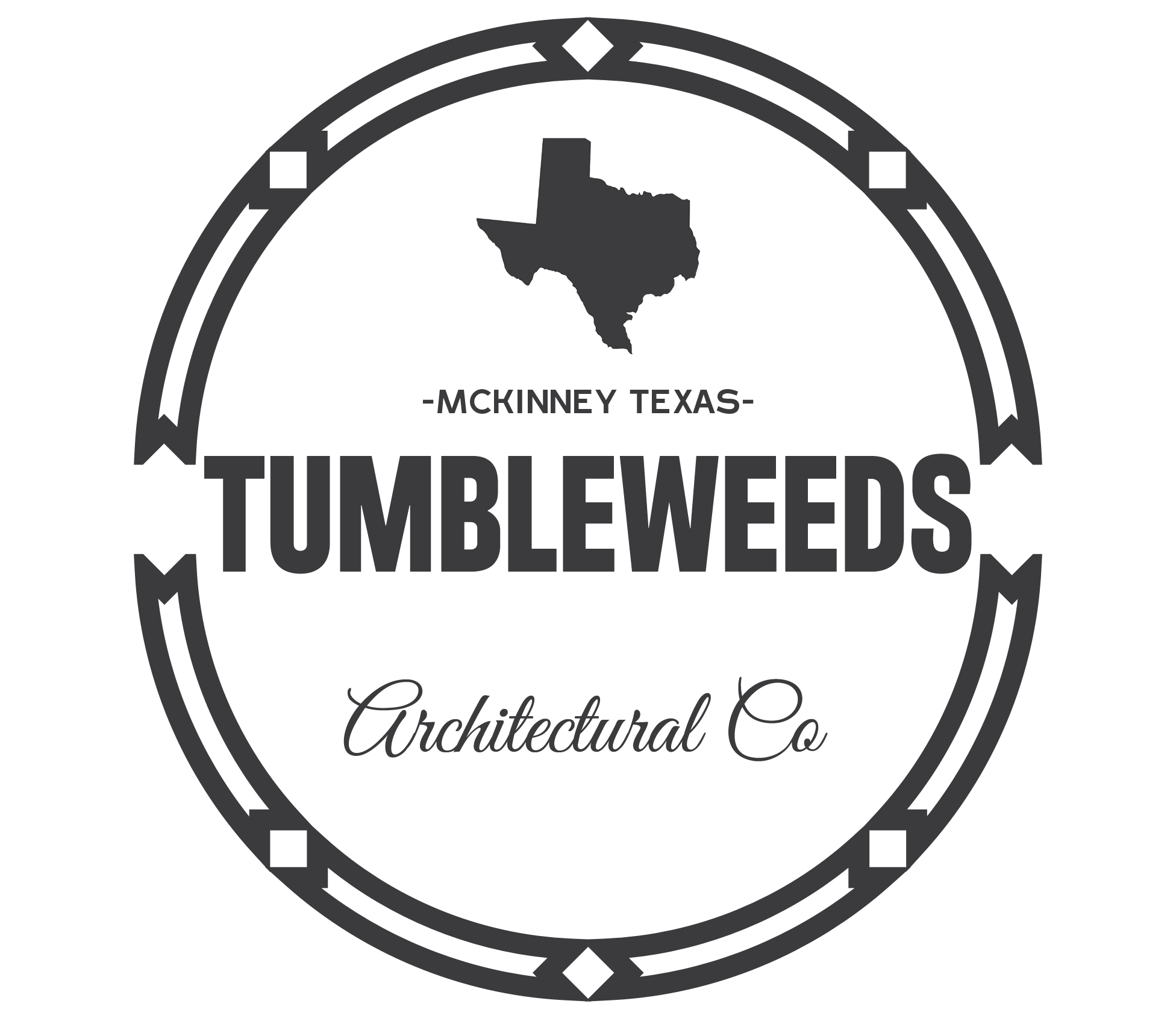When it comes to cleaning concrete surfaces, a pressure washer can be a game-changer.
We’ll explore the different types of pressure washers best suited for cleaning concrete, the ideal PSI and GPM needed for the job, the best pressure washer nozzles to use, and some important tips and precautions to keep in mind.
Discover the power of pressure washers in cleaning concrete surfaces.
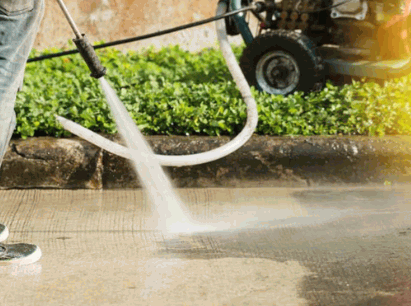
What Is A Pressure Washer?
A pressure washer is a powerful tool used for cleaning various surfaces, including concrete, by spraying high-pressure water to remove dirt, grime, and debris effectively.
Its versatility extends beyond just concrete, as pressure washers are also excellent for cleaning siding, driveways, decks, and even vehicles.
With their powerful jet of water, pressure washers can blast away stubborn stains, mold, mildew, and grease quickly and efficiently.
Efficiency is a key benefit of using pressure washers, as they save time and effort compared to manual cleaning methods.
Explore further: Can You Pressure Wash Solar Panels
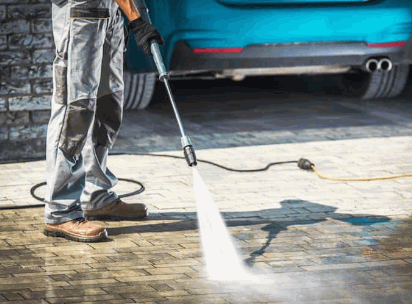
How Does A Pressure Washer Work?
Pressure washers work by utilizing a motor (electric or gas-powered) to power a pump that increases the water pressure, which is then expelled through a nozzle to clean various surfaces effectively.
The motor in a pressure washer drives the pump, which pressurizes water from a connected source, typically a garden hose. As the water flows into the pump, it gets compressed and then released at high velocity through the nozzle. This high-pressure stream effectively removes dirt, grime, mold, and other debris from surfaces.
The effectiveness of a pressure washer is often measured in pounds per square inch (PSI) – a higher PSI indicates greater cleaning power. The gallons per minute (GPM) rating determines how much water the pressure washer expels, contributing to the cleaning efficiency.
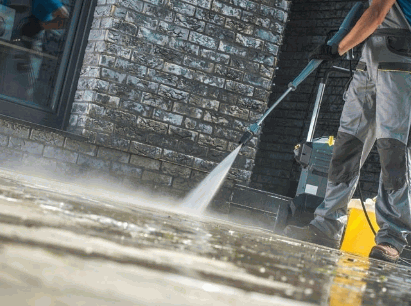
Why Use A Pressure Washer To Clean Concrete?
Using a pressure washer to clean concrete surfaces offers an efficient and effective way to remove tough stains, dirt, and grime, restoring the appearance of the concrete with minimal effort.
One of the key benefits of pressure washers is their ability to thoroughly clean concrete surfaces, reaching deep into the pores to eliminate embedded dirt that regular cleaning methods may not be able to tackle.
Pressure washers can significantly enhance the overall curb appeal of your property by giving your concrete areas a fresh, rejuvenated look, making them appear as good as new.
The powerful jets of water emitted by pressure washers also make them highly effective at swiftly removing stubborn debris such as grease stains or mold, saving you valuable time and effort.
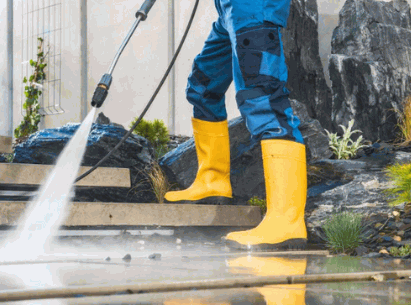
What Type Of Pressure Washer Is Best For Cleaning Concrete?
Regarding cleaning concrete surfaces, choosing between electric and gas-powered pressure washers depends on the scale of the cleaning task, with electric washers being ideal for smaller areas and gas-powered washers for larger surfaces.
Electric pressure washers are perfect for tackling driveways, patios, and smaller decks efficiently. They are lightweight and easier to maneuver, making them suitable for residential use.
On the other hand, gas-powered pressure washers excel in cleaning expansive areas such as parking lots, commercial buildings, and large outdoor spaces due to their higher pressure output. These machines are typically more powerful, offering greater cleaning power for stubborn stains on concrete surfaces.
Gas-Powered Pressure Washers
Gas-powered pressure washers, such as those equipped with Honda engines, are preferred for cleaning concrete due to their high power output and capability to handle tough cleaning agents effectively.
These pressure washers are known for their robust performance, making them ideal for tackling stubborn stains and grime on concrete surfaces. The power delivered by gas engines provides unparalleled efficiency, ensuring thorough cleaning even in hard-to-reach areas.
Plus their power, gas-powered pressure washers boast impressive durability, allowing them to withstand extended use in demanding cleaning projects. Their sturdy construction makes them reliable companions for both professional contractors and homeowners.
The versatility of gas-powered pressure washers extends to their compatibility with a wide range of cleaning agents, enabling users to customize their cleaning solutions for optimal results. Whether it’s removing oil stains or moss buildup, these washers offer the flexibility to address diverse cleaning needs with precision.
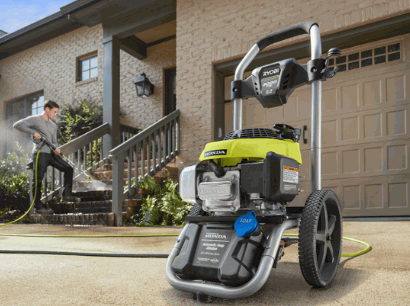
Electric Pressure Washers
Electric pressure washers, like those from Mi-T-M, are suitable for smaller concrete cleaning tasks where portability and ease of use are essential, especially when using specialized detergents for surface treatment.
These electric pressure washers are designed to efficiently blast away dirt, grime, and stains from concrete surfaces with minimal effort. The powerful water jets generated by these machines can easily tackle tough build-up and restore the concrete’s original appearance.
Their compact size and convenient electric power source make them ideal for residential or commercial use, providing a versatile cleaning solution without the need for constant refueling or excessive maintenance.
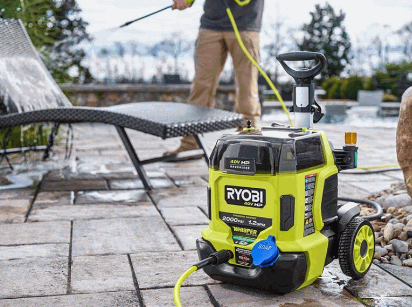
Hot Water Pressure Washers
Hot water pressure washers, like those from Hotsy, are particularly effective for cleaning concrete surfaces as the heat aids in dissolving tough stains and grime, making them ideal for use with bleach solutions for deep cleaning.
One of the key advantages of hot water pressure washers is their ability to penetrate deep into the porous surface of concrete, ensuring a thorough and effective cleaning process. The high temperature of the water not only helps in loosening hardened dirt and grease but also kills potentially harmful bacteria and mold growth.
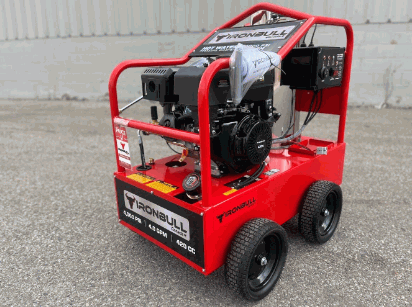
What PSI And GPM Are Needed To Clean Concrete?
To clean concrete effectively, a pressure washer with a PSI (pounds per square inch) of at least 2500 and a GPM (gallons per minute) of 2.5 or higher is recommended to ensure efficient removal of dirt and stains.
These specifications are crucial as they determine the force and volume of water emitted by the pressure washer, directly impacting its cleaning power.
A higher PSI rating indicates greater pressure, making it easier to tackle stubborn grime, while a higher GPM means more water flows through, aiding in washing away debris effectively.
By meeting these requirements, the pressure washer can dislodge dirt, oil, mold, and mildew from concrete surfaces swiftly and with precision.
What Are The Best Pressure Washer Nozzles For Cleaning Concrete?
Selecting the appropriate pressure washer nozzle is crucial for cleaning concrete effectively, with 15-degree, 25-degree, and 40-degree nozzles being popular choices for different cleaning tasks.
The 15-degree nozzle, often referred to as the ‘yellow tip,’ delivers a concentrated and powerful stream of water, making it ideal for removing tough stains and dirt from concrete surfaces. On the other hand, the 25-degree nozzle, known as the ‘green tip,’ offers a balance between pressure and coverage, suitable for general cleaning tasks.
The 40-degree nozzle, also called the ‘white tip,’ provides a wide spray pattern, making it perfect for rinsing and light cleaning applications. The angle of the nozzle plays a crucial role in the cleaning process, influencing the intensity and coverage of the water stream.
15-Degree Nozzle
The 15-degree nozzle is ideal for cleaning concrete surfaces efficiently, as it provides a concentrated, high-pressure stream that can tackle stubborn stains and dirt effectively.
Its narrow spray angle allows for increased pressure on a specific area, making it perfect for removing tough grime without damaging the concrete surface. The nozzle’s design ensures that it does not disperse water wastefully, resulting in water and energy savings during cleaning operations.
15-degree pressure washer nozzles are widely used for various applications beyond just concrete cleaning, such as stripping paint from surfaces, degreasing machinery, and even removing moss or mildew from outdoor spaces. This versatility makes them a valuable tool for both residential and commercial cleaning tasks.
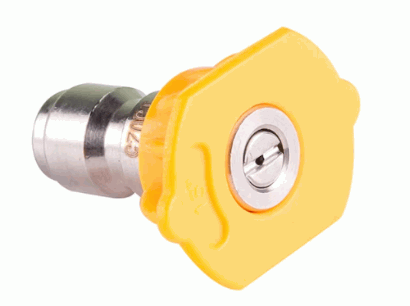
25-Degree Nozzle
The 25-degree nozzle, including rotary nozzles, offers an effective solution for cleaning concrete surfaces by providing a balance between pressure and coverage for thorough cleaning results.
Regarding tackling tough stains and grime on concrete, the 25-degree pressure washer nozzle proves to be a versatile tool. Its wide spray coverage facilitates efficient cleaning over larger areas while still delivering the power needed for effective dirt removal. The optimal angle of the nozzle ensures that the water stream concentrates enough pressure to loosen stubborn dirt without causing damage to the concrete surface. With the combination of the 25-degree angle and the rotary nozzles, users can achieve a comprehensive clean that leaves concrete looking refreshed and revitalized.
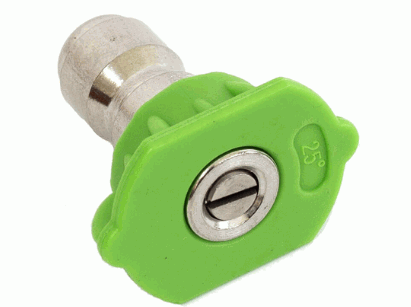
40-Degree Nozzle
The 40-degree nozzle, recommended by S&K Building Services, is suitable for larger concrete surfaces, offering a wider spray pattern that balances cleaning power and efficiency for optimal results.
When tackling extensive concrete cleaning projects, the advantage of the 40-degree pressure washer nozzle lies in its ability to cover more ground efficiently. The wider spray pattern ensures that a broader area is cleaned with each pass, saving time and energy during the cleaning process. The balanced power of this specific nozzle prevents damage to the concrete surface while effectively removing dirt, grime, and stains. This efficiency not only results in a thoroughly cleaned surface but also enhances the overall productivity of the cleaning task.
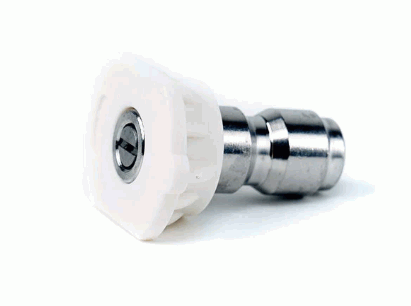
What Are Some Tips For Using A Pressure Washer To Clean Concrete?
When using a pressure washer to clean concrete, it is essential to start with low pressure, use a wide spray pattern, and move the washer in a steady motion to ensure thorough and effective cleaning results without damaging the surface.
Starting with low pressure is crucial when cleaning concrete surfaces to prevent any potential damage. By using a wide spray pattern, you can evenly distribute the water and cleaning solution, reaching all areas effectively. Moving the pressure washer steadily in a consistent back-and-forth or sweeping motion helps avoid streaks and ensures a uniform clean. Proper technique plays a significant role in achieving the best results while preserving the integrity of the concrete.
Start With Low Pressure
Starting with low pressure is crucial when cleaning concrete surfaces with a pressure washer to prevent damage and ensure thorough cleaning without compromising surface integrity.
Initiating the cleaning process with low pressure is like setting the foundation for a successful cleaning operation. By starting gently, you allow the water pressure to gradually dislodge dirt and grime without the risk of etching or gouging the concrete surface. This method not only safeguards the structural integrity of the concrete but also helps in achieving more effective results by thoroughly removing stubborn stains and debris. The gentle approach also plays a key role in surface protection, preventing unnecessary wear and tear during the cleaning process.
Use A Wide Spray Pattern
Utilizing a wide spray pattern is recommended for cleaning concrete surfaces with a pressure washer as it covers more area efficiently, ensuring even cleaning and consistent results.
When you use a wide spray pattern, the high-pressure water is dispersed over a larger surface area, which means you can clean faster and more effectively. The wide coverage helps you to tackle stubborn dirt and grime with ease, saving you time and effort. The consistent and thorough cleaning achieved through the wide spray pattern ensures a more professional-looking finish for your concrete surfaces.
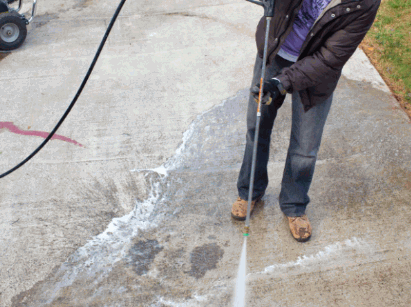
Move The Pressure Washer In A Steady Motion
Maintaining a steady motion while using a pressure washer on concrete surfaces is essential to achieve uniform cleaning, prevent streaks, and ensure thorough removal of dirt and stains.
Consistent movements not only help in evenly distributing the cleaning power across the surface but also assist in avoiding any patchy areas that might occur due to uneven application. By moving the pressure washer in a smooth and continuous manner, you can guarantee that each part of the concrete receives the same level of cleaning intensity, leading to a cohesive appearance after the process is complete. This approach aids in preventing the formation of lines or streaks, providing a professional-looking finish that enhances the overall aesthetics of the concrete.
What Precautions Should Be Taken When Using A Pressure Washer On Concrete?
When using a pressure washer on concrete, it is important to take precautions such as wearing protective gear, avoiding direct contact with the nozzle, and using belt drives for better control and longevity of the equipment.
Always start by testing a small inconspicuous area to ensure the pressure setting is appropriate for the concrete surface without causing damage.
It’s crucial to maintain a safe distance between the nozzle and the surface to prevent any accidental injury or etching.
Regularly inspect the washer’s nozzles for any signs of wear and tear, and replace them as needed to maintain efficiency and safety.
Remember to follow the manufacturer’s guidelines for proper storage and maintenance to prolong the lifespan of your pressure washer and ensure optimal performance.
